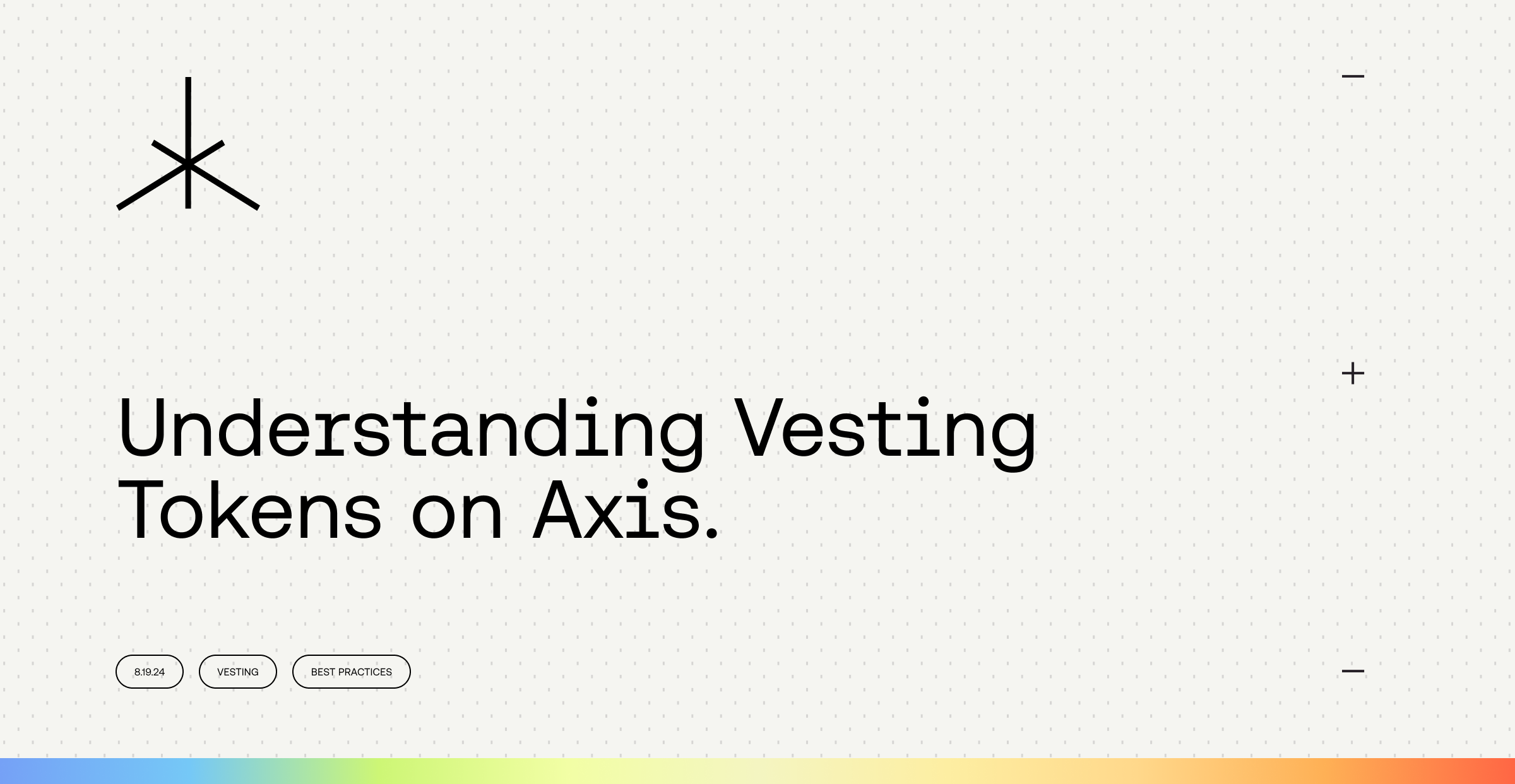Vesting Tokens on Axis

Vesting is arguably the most crucial element in designing a protocol’s tokenomics, which is why it’s a standard for ensuring long-term commitment from early investors, team members, and even public sale participants. On Axis, we’ve built functionality to support token vesting, giving sellers the flexibility to structure their auctions in ways that align with their overall roadmap. However, it’s essential to use these tools strategically to ensure a successful token launch.
Built-In Functionality for Token Vesting
Axis provides built-in support for token vesting through our linear vesting module, which allows sellers to configure vesting schedules at auction creation. When an auction is deployed with vesting terms and users win their bids, the system mints an ERC6909 NFT to represent their claim on the vesting tokens. This NFT continuously releases tokens to the holder over the vesting period.
Sellers can define both a start and end time for the vesting schedule. The token balance is then released evenly over this period. It’s important to note that if the start time functions as a cliff, no tokens will be vested until that specific time is reached.
While Axis currently supports only linear vesting tokens, we’ve designed the protocol to be modular, meaning sellers can integrate third-party solutions like Sablier, Superfluid, LlamaPay or Hedgey for more complex vesting needs.
When to Use Vesting Tokens
Vesting can be a powerful tool for aligning incentives, but sellers must apply them appropriately based on the auction mechanism being used.
Fixed-Price Sales are typically the best fit for vesting tokens. In these sales, participants purchase tokens at a predetermined price set by the seller, and vesting can help align long-term incentives by gradually distributing the tokens. This approach ensures that buyers are committed to the project’s success over time, reducing the likelihood of immediate sell-offs that could harm the token’s price stability. There are countless examples of extreme price drops once there is token liquidity and price discovery, illustrating the need for vesting in Fixed-Price Sales.
Sealed-Bid Auctions, on the other hand, are designed to optimize price discovery by allowing users to place private, encrypted bids. The core value of this mechanism lies in its ability to discover the genuine market price of a token. Auctions give early token holders that ability to acquire tokens at a uniform price, instead of the PvP dynamics seen when purchasing from a liquidity pool.. To preserve this functionality, tokens distributed through Sealed-Bid Auctions should be immediately liquid. Imposing vesting terms on a Sealed-Bid Auction can undermine the auction’s primary objective by introducing additional barriers to discovering a token’s market-clearing price.
Best Practices for Sellers
To maximize the success of your token launch on Axis, consider the following best practices:
- If you choose to implement vesting, make sure the terms are clearly communicated and reasonable for your community.
- Avoid overly long or restrictive vesting periods that could discourage participation.
- Showcase the Vesting NFT to provide additional transparency for participants. This feature ensures that token holders can track their vested tokens in real-time.
- If your project requires more complex vesting schedules, consider integrating third-party or custom solutions to tailor the vesting process to your needs.
- Ask your Curator for feedback!
